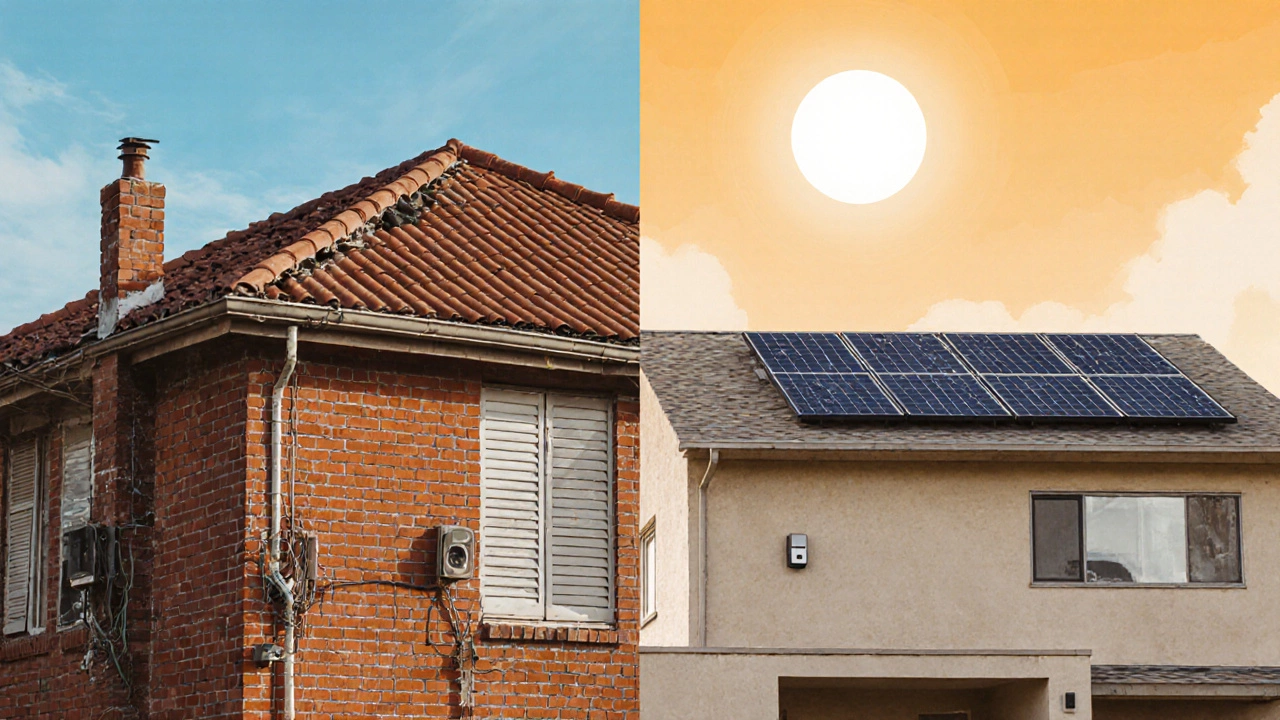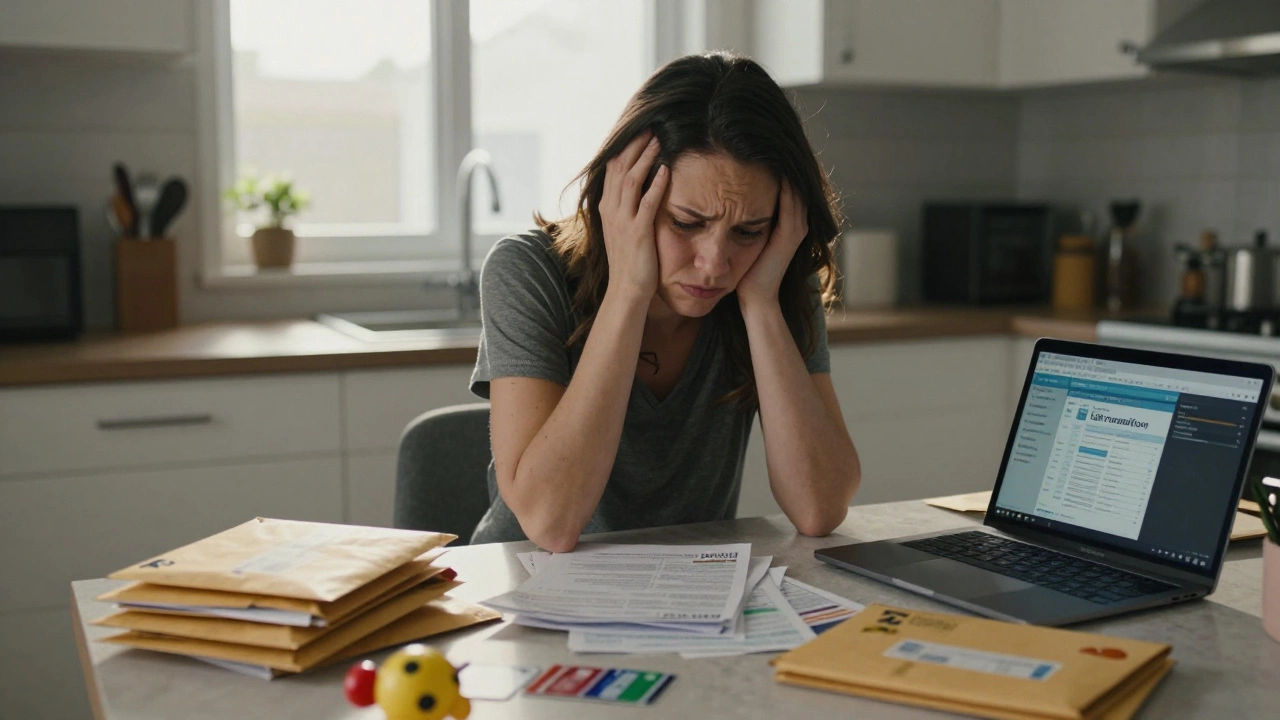Home Insurance Premium Calculator
Estimate Your Premium
Enter your details to see your estimated annual premium and potential savings.
Estimated Annual Premium:
Based on your rebuild cost and home characteristics
Potential Savings with Upgrades
Note: This calculator provides an estimate based on current market rates. Your actual premium will depend on your insurer's specific underwriting criteria and may vary by provider.
If you’ve opened your latest home insurance bill and felt like you were hit with a surprise tax, you’re not alone. Homeowners across Australia are seeing premiums jump by 20%, 30%, even 50% in just one year. It’s not just you. It’s not a mistake. And it’s not because your house suddenly got more valuable - though that plays a part. The real reasons behind sky-high home insurance are deeper, and they’re tied to forces beyond your control.
Climate change is making homes riskier
Extreme weather isn’t coming - it’s already here. Queensland and New South Wales have seen record-breaking floods, bushfires, and hailstorms over the last three years. In 2024 alone, insurance payouts for weather-related claims in Australia hit $5.2 billion, up from $3.1 billion in 2021. That’s a 68% increase in just three years.
Insurers aren’t ignoring this. They’re using satellite data, historical weather patterns, and flood maps to predict which homes are most likely to get damaged. If your house sits in a zone that’s been flagged for repeat flooding - even if it never flooded before - your premium will go up. Some insurers now refuse to cover homes in high-risk areas unless you’ve installed flood barriers or raised electrical systems. And if you haven’t? You’ll pay more.
Construction costs have exploded
Home insurance doesn’t just cover your land. It covers rebuilding your house from scratch. And rebuilding costs have surged. In 2025, the average cost to rebuild a standard 3-bedroom brick home in Brisbane is $420,000. In 2020, it was $290,000. That’s a 45% jump in five years.
Why? Labor shortages. Supply chain delays. Steel, timber, and concrete prices still haven’t settled after pandemic spikes. And now, new building codes require homes to be built stronger - higher wind ratings, better fire resistance, more durable roofing. All of that adds cost. Insurers base your sum insured on today’s rebuild price, not what you paid in 2015. If you haven’t updated your cover in years, you’re underinsured. And if you’re underinsured, your premium goes up to cover the risk.
Your claims history - and your neighbors’ - matters
Insurance isn’t just about your house. It’s about your street. If three homes on your block filed claims for storm damage last year, your insurer sees your area as high-risk. Even if your house is fine, you’ll pay more. That’s called “area risk pooling.”
And your own claims history? One claim in the last five years can raise your premium by 15-25%. Two claims? That’s often a 40%+ increase. Some insurers even drop customers after two claims, no matter how minor. A broken window from hail? A leaky roof after a storm? Those count. Insurers track every claim, no matter how small.

Insurers are pulling out of high-risk areas
When losses rise, companies cut back. In 2024, three major insurers stopped offering new policies in parts of the Sunshine Coast, Northern Rivers, and parts of Adelaide. Others raised minimum deductibles to $5,000. That means if your roof gets damaged, you pay the first $5,000 yourself.
With fewer companies competing, the ones left can charge more. Less competition = higher prices. It’s basic economics. In some suburbs, you might only have one or two insurers willing to cover you - and they know it. That’s when premiums climb fast.
Your home’s age and materials are working against you
Older homes cost more to insure. Why? Because they don’t meet modern safety standards. A 1970s brick home with original wiring, no storm shutters, and a tile roof that’s 30 years old is seen as a liability. Insurers know those roofs crack in hail. That wiring overheats. That plumbing fails under pressure.
Modern homes get discounts. Newer roofs? Lower premiums. Alarm systems? Lower premiums. Fire sprinklers? Even lower. If your home hasn’t been upgraded since the 1990s, you’re paying the price. It’s not about how nice your place looks - it’s about how likely it is to break when the next storm hits.

You’re paying for reinsurance - not just your own risk
Here’s something most people don’t realize: your insurer doesn’t keep all the risk. They buy reinsurance - insurance for insurers. When a major disaster hits, like the 2022 Queensland floods, reinsurers pay out big. But they charge more each year to cover those losses.
That cost gets passed down to you. In 2025, global reinsurance rates jumped 22% after major losses in the U.S., Canada, and Europe. Australia’s insurers had to pay more to protect themselves. So they raised your premiums to make up the difference. You’re not just paying for your home. You’re paying for the global insurance system’s losses.
What you can do about it
It’s not all bad news. You have control over some of this.
- Review your sum insured every year. Don’t guess. Use the Insurance Council of Australia’s rebuild cost calculator to get an accurate number.
- Upgrade your home. Install hail-resistant roofing, storm shutters, or a modern electrical panel. These can cut your premium by 10-20%.
- Bundle policies. If you have car insurance with the same company, ask for a multi-policy discount. Many offer 15% off.
- Shop around every year. Don’t auto-renew. Use comparison sites like Canstar or Compare the Market. Rates vary wildly - sometimes by $1,000 a year for the same coverage.
- Ask about no-claim discounts. If you haven’t claimed in five years, you deserve a lower rate. Don’t assume you’re getting it.
And if you’re in a high-risk zone? Talk to a specialist broker. They know which insurers still cover flood-prone areas and which ones offer flexible payment plans. Don’t give up. Coverage is still out there - it just takes more work now.
What’s next for home insurance?
Don’t expect premiums to drop soon. Climate models show more extreme weather is locked in for the next decade. Construction costs aren’t falling. Reinsurance rates aren’t easing. The only thing you can control is how prepared you are.
Start now. Update your cover. Make repairs. Compare options. The longer you wait, the more expensive it gets. And when the next storm hits, you’ll be glad you did.
Why did my home insurance premium jump 40% this year?
A 40% jump usually means one or more of these: you’ve filed a claim recently, your area had multiple claims last year, your home hasn’t been upgraded, or your sum insured is outdated. Insurers also raised rates due to rising reinsurance costs and more frequent extreme weather events. Check your policy details and compare quotes to see if you’re being overcharged.
Can I be denied home insurance because of where I live?
Yes. In high-risk flood or bushfire zones, some insurers have stopped offering new policies entirely. If you’re in one of these areas, you may still get coverage, but only through specialist insurers or government-backed schemes like the Queensland Flood Reinsurance Pool. You’ll pay more, and your coverage may have higher excesses.
Does having a security system lower my premium?
Yes - but only if it’s monitored and connected to a certified alarm company. Simple door locks or motion lights won’t help. A monitored alarm system that alerts police or a response center can reduce your premium by up to 15%. Make sure your insurer knows about it and has proof of installation.
Should I increase my excess to lower my premium?
It can help - but only if you can afford the higher out-of-pocket cost. Raising your excess from $500 to $2,000 might cut your premium by 20%. But if your roof gets damaged and you need to claim, you’ll pay $2,000 yourself. Only do this if you have emergency savings to cover it. Otherwise, you’re just shifting risk, not reducing cost.
How often should I review my home insurance?
At least once a year. Rebuild costs change. Your home may have been upgraded. Your area’s risk profile may have shifted. And insurers change their rates constantly. Reviewing annually ensures you’re not overpaying or underinsured. Set a calendar reminder for the same month each year.








